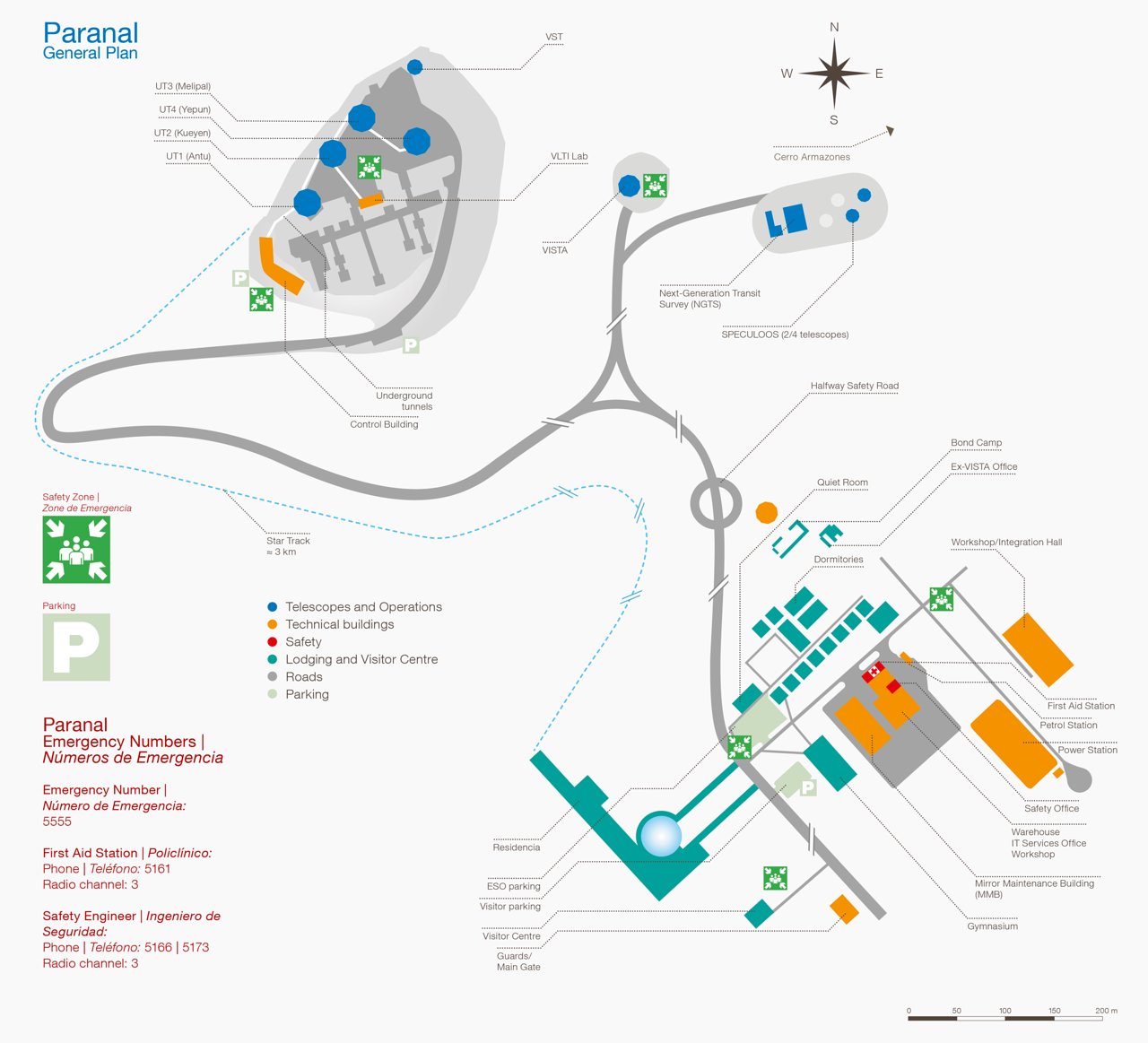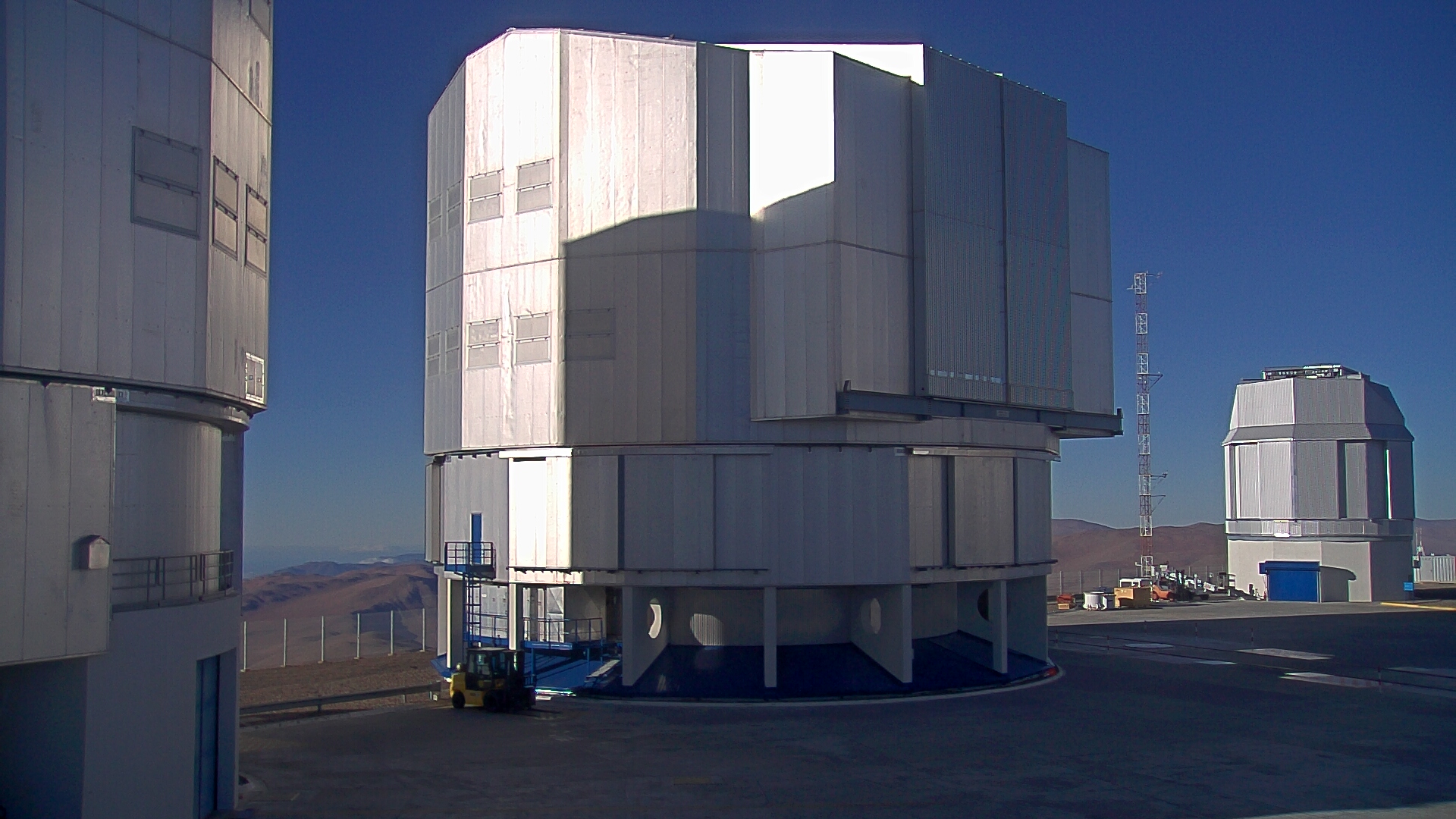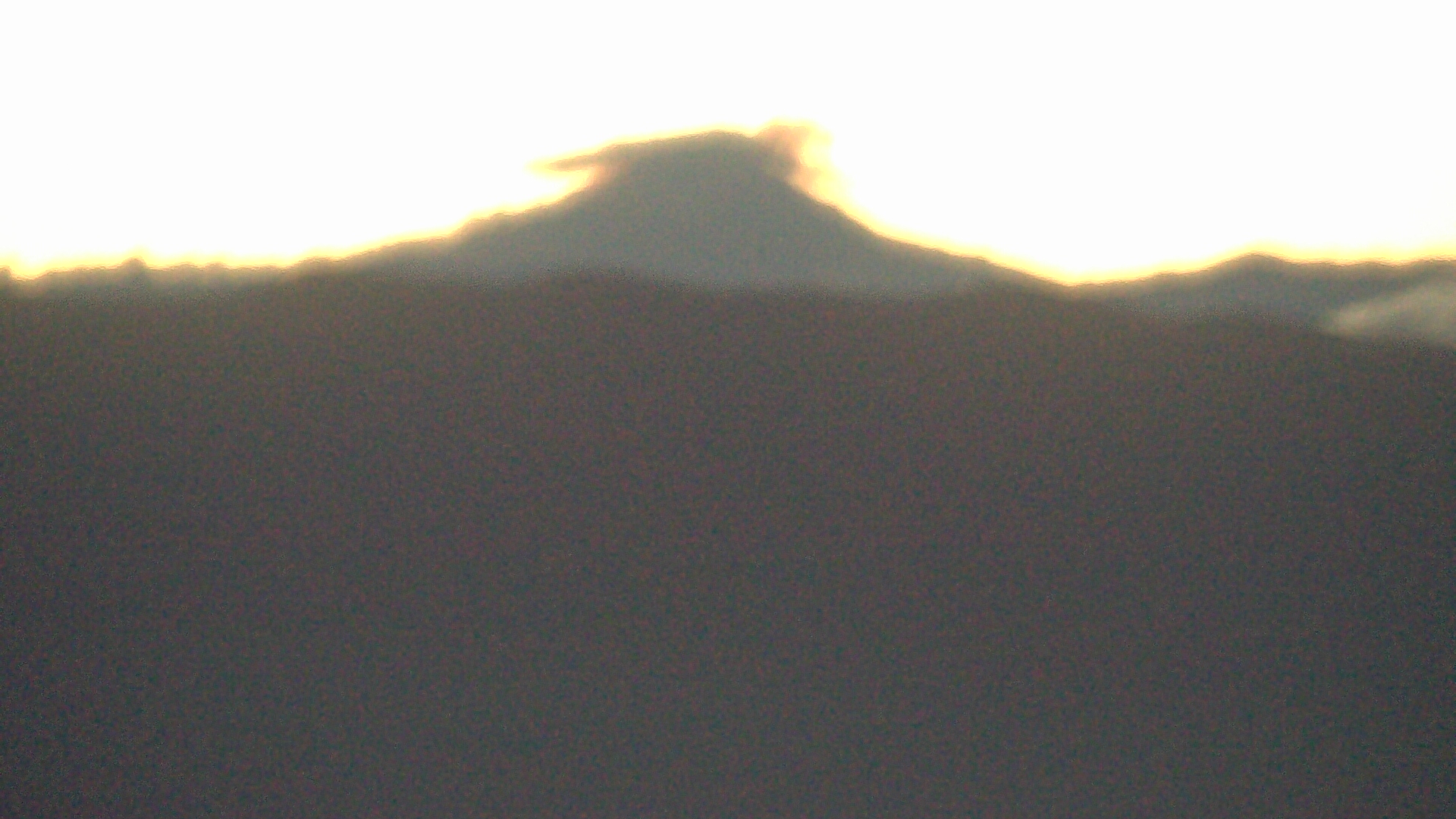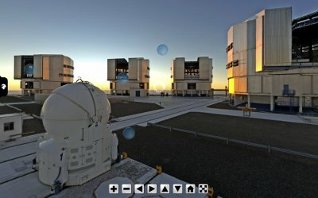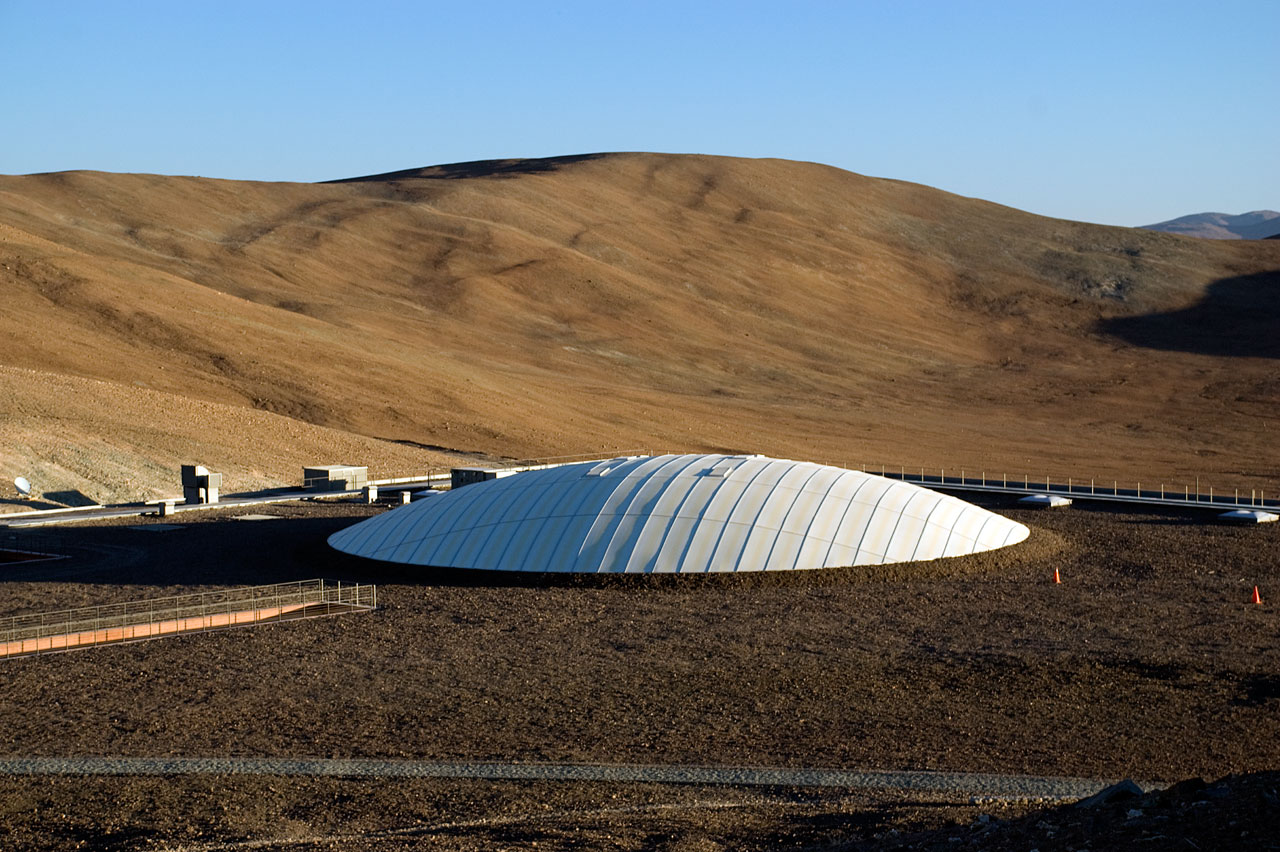Very Large Telescope (original) (raw)
The world's most advanced visible-light astronomical observatory
Webcam | 09 Mar 2017 19:01 CET
LIVE
Latest available panoramic image of Paranal (09 Mar 2017 19:01 CET)
Please note that the webcams are currently under maintenance and will be fully operational as soon as possible.
ESO's Very Large Telescope (VLT) is a flagship facility for European ground-based astronomy. It is one of the world's most advanced optical telescopes, consisting of four Unit Telescopes with main mirrors of 8.2m diameter and four movable 1.8m diameter Auxiliary Telescopes. The telescopes can work together, to form a giant ‘interferometer’, the ESO Very Large Telescope Interferometer, allowing astronomers to pick up much finer details of the cosmos than would be possible with the ATs or the UTs alone.
The 8.2m diameter Unit Telescopes can also be used individually. With one such telescope, images of celestial objects as faint as magnitude 30 can be obtained in a one-hour exposure. This corresponds to seeing objects that are four billion (four thousand million) times fainter than what can be seen with the unaided eye.
The large telescopes are named Antu, Kueyen, Melipal and Yepun.
Paranal map and safety. Credit: ESO
Webcam
Webcam | 09 Mar 2017 19:01 CET
LIVE
Latest available image of MELIPAL, also known as UT3 (09 Mar 2017 19:01 CET)
Webcam | 09 Mar 2017 19:01 CET
LIVE
On extremely clear days the magnificent 6739-metre volcano Llullaillaco is visible in the background of this photograph. It is an amazing 190 kilometres away on the border with Argentina. (09 Mar 2017 19:01 CET)
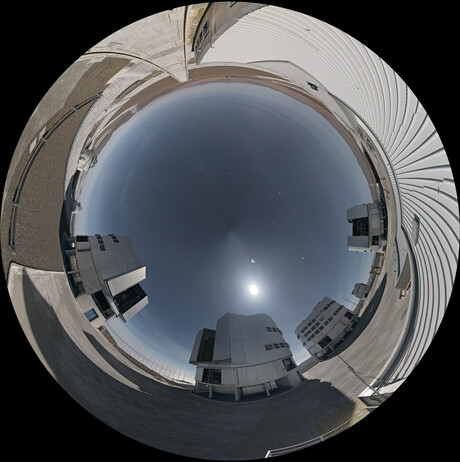 Webcam | 20 Oct 2016 12:03 CEST LIVE Circular fisheye Webcam | 20 Oct 2016 12:03 CEST LIVE Circular fisheye |
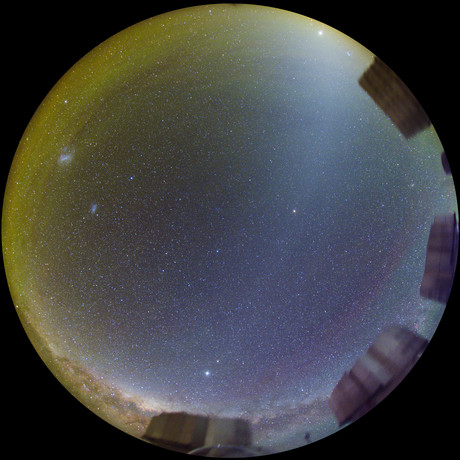 Webcam | 20 Oct 2016 12:03 CEST LIVE Extra deep night-time circular fisheye. NB: only live at night. Webcam | 20 Oct 2016 12:03 CEST LIVE Extra deep night-time circular fisheye. NB: only live at night. |
|---|
A Tour at Paranal Observatory
Click on the image to take a Virtual Tour in and nearby the VLT.
Visit Paranal Observatory
- Journalists, science writers and producers, please see Media Visits
- Tourist, students and lay people, please see Tourists and Students Visits
Telescopes and Instruments
The VLT instrumentation programme is the most ambitious programme ever conceived for a single observatory. It includes large-field imagers, adaptive optics corrected cameras and spectrographs, as well as high-resolution and multi-object spectrographs and covers a broad spectral region, from deep ultraviolet (300 nm) to mid-infrared (24 µm) wavelengths.
The Unit Telescopes
The 8.2m diameter telescopes are housed in compact, thermally controlled buildings, which rotate synchronously with the telescopes. This design minimises any adverse effects on the observing conditions, for instance from air turbulence in the telescope tube, which might otherwise occur due to variations in the temperature and wind flow. The first of the Unit Telescopes, 'Antu', went into routine scientific operations on 1 April 1999. Today, all four Unit Telescopes and all four Auxiliary Telescopes are operational.
VLT Unit Telescope enclosures:
- Height: 2850 cm
- Diameter: 2900 cm
The Auxiliary Telescopes
Although the four 8.2-metre Unit Telescopes can be combined in the VLTI, they are mostly used for individual observations and are only available for interferometric observations for a limited number of nights every year. But four smaller, dedicated 1.8-metre Auxiliary Telescopes (ATs) are available to allow the VLTI to operate every night.
More information is available on this link
Science with the Very Large Telescope
 The VLT has made an undisputed impact on observational astronomy. It is the most productive individual ground-based facility, and results from the VLT have led to the publication of an average of more than one peer-reviewed scientific paper per day. VLT contributes greatly to making ESO the most productive ground-based observatory in the world. The VLT has stimulated a new age of discoveries, with several notable scientific firsts, including the first image of an extrasolar planet (eso0428), tracking individual stars moving around the supermassive black hole at the centre of the Milky Way (eso0846), and observing the afterglow of the furthest known Gamma-Ray Burst.
The VLT has made an undisputed impact on observational astronomy. It is the most productive individual ground-based facility, and results from the VLT have led to the publication of an average of more than one peer-reviewed scientific paper per day. VLT contributes greatly to making ESO the most productive ground-based observatory in the world. The VLT has stimulated a new age of discoveries, with several notable scientific firsts, including the first image of an extrasolar planet (eso0428), tracking individual stars moving around the supermassive black hole at the centre of the Milky Way (eso0846), and observing the afterglow of the furthest known Gamma-Ray Burst.
More about Science with the VLT
- Science with ESO Telescopes
- ESO Top 10 Astronomical Discoveries, n° 1, 3, 5, 6, 7, 8 (also available as presentation)
More about the Very Large Telescope
- More interesting facts are available on the FAQs page
- More images and videos are available in the ESO multimedia archive
- Read more on about this telescope on the VLT Handout in PDF format
- For Scientists: for more detailed information, please see our technical pages
- More detailed background and technical information is provided in the VLT Whitebook
Residencia
The VLT hotel, the Residencia, is an award-winning building, and served as a backdrop for part of the James Bond movie Quantum of Solace.
The VLT Trailer
Download the VLT trailer in the video archive.
VLT
| Name: | Very Large Telescope |
|---|---|
| Site: | Cerro Paranal |
| Altitude: | 2635 m |
| Enclosure: | Compact optimised cylindrical enclosure |
| Type: | Optical/infrared, with interferometry |
| Optical design: | Ritchey-Chrétien reflector |
| Diameter. Primary M1: | 8.20 m |
| Material. Primary M1: | ZeroDur |
| Diameter. Secondary M2: | 0.94 m |
| Material. Secondary M2: | Beryllium |
| Diameter. Tertiary M3: | 1.242 x 0.866 m (elliptical flat) |
| Mount: | Alt-Azimuth mount |
| First Light date: | UT1, Antu: 25 May 1998 UT2, Kueyen: 1 March 1999 UT3, Melipal: 26 Jan 2000 UT4, Yepun: 4 September 2000 |
| Active Optics: | Yes |
| Adaptive Optics: | UT4: Laser Guide Star + SINFONIUT1: NACOUT3: SPHERE |
| Interferometry: | UT maximum 130 m baseline. UT + AT maximum 140 m baseline. |
| Images taken with the VLT: | Link |
| Images of the VLT: | Link |
| Videos of the VLT: | Link |
| Press Releases with the VLT: | Link |
Did you know?
The smallest detail distinguishable with the VLT's adaptive optics system is smaller than the size of a DVD on the International Space Station, as seen from the ground (about 50 milliarcseconds).
Did you know?
The smallest detail distinguishable with the VLTI is about the size of a sesame seed on the International Space Station, as seen from the ground (about 2 milliarcseconds).
Did you know?
Stars form in dense clouds of the interstellar medium, but even in these densest regions the pressure is comparable to the most tenuous vacuum created in a laboratory on Earth. In these clouds, the temperatures are below -200 degrees Celsius.
Did you know?
When astronomers combine the light waves from two telescopes using the principle of interferometry, they can very precisely determine the direction of an object in space. Your ears work in a similar way to localise sounds, by comparing the sound received at the left and right ears.
Did you know?
The skies over the ESO sites in Chile are so dark that on a clear moonless night it is possible to see your shadow cast by the light of the Milky Way alone.
Did you know?
The VLT 8.2-metre diameter primary mirrors were polished so precisely that if they were scaled up to the diameter of the Earth, the largest imperfection on them would still be no larger than a pebble.
Did you know?
The VLT mirrors are 8.2 metres in diameter, but only 17.5 cm thick — very thin relative to their size. If you scaled the mirror down to the size of a CD, its thickness would be equivalent to just two discs placed on top of each other. Despite being very thin, the large diameter means the glass weighs 23 tonnes.
Did you know?
The movable structure of each VLT Unit Telescopes weighs about the same as a fully loaded jumbo jet. However, it is so perfectly balanced, resting on hydrostatic oil-film bearings, that the giant telescopes can be moved by hand.
Did you know?
The Paranal observatory site is so remote that everything needed must be brought in specially. The 60 000 litres of water that are used per day are delivered by truck from Antofagasta.
ESO Cookies Policy
The European Organisation for Astronomical Research in the Southern Hemisphere (ESO) is the pre-eminent intergovernmental science and technology organisation in astronomy. It carries out an ambitious programme focused on the design, construction and operation of powerful ground-based observing facilities for astronomy.
This Cookies Policy is intended to provide clarity by outlining the cookies used on the ESO public websites, their functions, the options you have for controlling them, and the ways you can contact us for additional details.
What are cookies?
Cookies are small pieces of data stored on your device by websites you visit. They serve various purposes, such as remembering login credentials and preferences and enhance your browsing experience.
Categories of cookies we use
Essential cookies (always active): These cookies are strictly necessary for the proper functioning of our website. Without these cookies, the website cannot operate correctly, and certain services, such as logging in or accessing secure areas, may not be available; because they are essential for the website’s operation, they cannot be disabled.
csrftoken
XSRF protection token. We use this cookie to protect against cross-site request forgery attacks.
1st party
Stored
1 year
user_privacy
Your privacy choices. We use this cookie to save your privacy preferences.
1st party
Stored
6 months
_grecaptcha
We use reCAPTCHA to protect our forms against spam and abuse. reCAPTCHA sets a necessary cookie when executed for the purpose of providing its risk analysis. We use www.recaptcha.net instead of www.google.com in order to avoid unnecessary cookies from Google.
3rd party
Stored
6 months
Functional Cookies: These cookies enhance your browsing experience by enabling additional features and personalization, such as remembering your preferences and settings. While not strictly necessary for the website to function, they improve usability and convenience; these cookies are only placed if you provide your consent.
preferred_language
Language settings. We use this cookie to remember your preferred language settings.
1st party
Stored
1 year
sessionid
ESO Shop. We use this cookie to store your session information on the ESO Shop. This is just an identifier which is used on the server in order to allow you to purchase items in our shop.
1st party
Stored
2 weeks
Analytics cookies: These cookies collect information about how visitors interact with our website, such as which pages are visited most often and how users navigate the site. This data helps us improve website performance, optimize content, and enhance the user experience; these cookies are only placed if you provide your consent. We use the following analytics cookies.
Matomo Cookies:
This website uses Matomo (formerly Piwik), an open source software which enables the statistical analysis of website visits. Matomo uses cookies (text files) which are saved on your computer and which allow us to analyze how you use our website. The website user information generated by the cookies will only be saved on the servers of our IT Department. We use this information to analyze www.eso.org visits and to prepare reports on website activities. These data will not be disclosed to third parties.
On behalf of ESO, Matomo will use this information for the purpose of evaluating your use of the website, compiling reports on website activity and providing other services relating to website activity and internet usage.
ON | OFF
Matomo cookies settings:
_pk_id
Stores a unique visitor ID.
1st party
Stored
13 months
_pk_ses
Session cookie temporarily stores data for the visit.
1st party
Stored
30 minutes
_pk_ref
Stores attribution information (the referrer that brought the visitor to the website).
1st party
Stored
6 months
_pk_testcookie
Temporary cookie to check if a visitor’s browser supports cookies (set in Internet Explorer only).
1st party
Stored
Temporary cookie that expires almost immediately after being set.
Additional Third-party cookies on ESO websites: some of our pages display content from external providers, e.g. YouTube.
Such third-party services are outside of ESO control and may, at any time, change their terms of service, use of cookies, etc.
YouTube: Some videos on the ESO website are embedded from ESO’s official YouTube channel. We have enabled YouTube’s privacy-enhanced mode, meaning that no cookies are set unless the user actively clicks on the video to play it. Additionally, in this mode, YouTube does not store any personally identifiable cookie data for embedded video playbacks. For more details, please refer to YouTube’s embedding videos information page.
Cookies can also be classified based on the following elements.
Regarding the domain, there are:
- First-party cookies, set by the website you are currently visiting. They are stored by the same domain that you are browsing and are used to enhance your experience on that site;
- Third-party cookies, set by a domain other than the one you are currently visiting.
As for their duration, cookies can be:
- Browser-session cookies, which are deleted when the user closes the browser;
- Stored cookies, which stay on the user's device for a predetermined period of time.
How to manage cookies
Cookie settings: You can modify your cookie choices for the ESO webpages at any time by clicking on the link Cookie settings at the bottom of any page.
In your browser: If you wish to delete cookies or instruct your browser to delete or block cookies by default, please visit the help pages of your browser:
Please be aware that if you delete or decline cookies, certain functionalities of our website may be not be available and your browsing experience may be affected.
You can set most browsers to prevent any cookies being placed on your device, but you may then have to manually adjust some preferences every time you visit a site/page. And some services and functionalities may not work properly at all (e.g. profile logging-in, shop check out).
Updates to the ESO Cookies Policy
The ESO Cookies Policy may be subject to future updates, which will be made available on this page.
Additional information
For any queries related to cookies, please contact: pdprATesoDOTorg.
As ESO public webpages are managed by our Department of Communication, your questions will be dealt with the support of the said Department.
